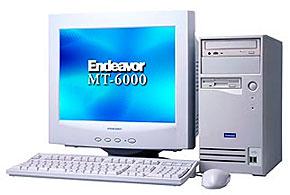Should I switch from Windows XP to...
22
04
Should I switch from Windows XP to "7" or "8.1": SOHO / How to choose a "business PC" that works for SMEs (2)
← ・ SOHO / How to choose a “business PC” that works for small and medium-sized enterprises (1): “Windows XP” end-of-support problem that I can't ask anymore
Ideally, OS upgrade and hardware replacement should be done at the same time.
Windows XP desktop screen.At that time, the user interface named "Luna" gave a fresh impression.Windows XP is about to end support on April 9, 2014 (Japan time). The OS was released in 2001.
2001 was called the "first year of broadband" as NTT East started offering "B FLET'S" and Yahoo! BB, Ymobile, and ACCA Networks entered the low-priced ADSL service. It's a year. In addition, there was an event that DDI Pocket started the mobile communication service "Air H", and the communication service was in the middle of the transition period from narrow band to broadband.
Although Windows XP was released under such circumstances, there are still many specifications that assume the old communication line, including dial-up connection. With these specifications, it is structurally difficult to counter advanced threats such as spyware these days, and even if you use the latest software, it is a situation similar to a tightrope walk.
An example of a desktop PC released in October 2001 (Epson Direct "Endeavor MT-6000"). It was equipped with Windows XP Professional, Pentium 4 1.5GHz, 128MB memory, and 40GB HDD, and the price was around 95,000 yen. FD drive and CRT make you feel the timesLet me give you an easy-to-understand example. When Windows XP was first released, the mainstream CPU in PCs was just shifting from Pentium III to Pentium 4, but the technology to detect unknown viruses in real time by the advanced heuristic engine often found in antivirus software these days is , It wasn't common at that time.
Therefore, even if you try to perform real-time detection on these older generation CPUs, the processing speed will not catch up and it will not work properly in most cases. Unless you upgrade the hardware and replace it with a new OS designed with these features in mind from the development stage, it will be difficult to support.
In addition, the evolution of hardware other than communication functions is remarkable. Technologies such as 64-bit support for large-capacity memory, high-speed interfaces such as USB 3.0, high-resolution displays, and touch panels were not yet or uncommon at the time Windows XP was released. As for the CPU, Intel Core, which appeared after Pentium, has evolved to the 4th generation (development code name: Haswell), and the environment above the quad core has become commonplace, and the processing speed has improved dramatically.
Windows XP generation PCs are also worried about hardware deterioration over time. Even if only the OS is upgraded, the internal parts such as the HDD and power supply that recorded important data have reached the end of their life, and if they break down immediately, there is no source or child.
With this in mind, if you continue to cheat on the hardware of the time, it's a good idea to replace it with new hardware instead of just upgrading the OS. Most of the new hardware consumes less power and can be expected to save electricity, so it has a high merit for corporate use.

Windows 7 with high operability and compatibility close to XP
Windows 7 desktop. The semi-transparent effect of Aero and the design around the start button are inherited from Windows Vista, but the overall configuration is close to Windows XP. There is also a classic theme that brings you closer to the simple UI of Windows 2000 and earlier.The latest "Windows 8" (including Windows 8.1, which can be updated free of charge) and the previous "Windows 7" are candidates as the OS to be migrated from Windows XP while making the best use of Windows software assets. obtain. However, at present, Windows 7 is the most popular destination OS for business use, accounting for about 60%.
There are several reasons why Windows 7 is preferred. One is that the operability is close to that of Windows XP. The latest Windows 8 has an interface called "modern UI" that is premised on touch operation, and it looks very different from Windows XP.
Of course, it is possible to operate with the mouse instead of touch, but until the update to Windows 8.1 the other day, even the start button does not exist, and even with that start button, the function is significantly different from the conventional one, so it is migrated from Windows XP Then there will be a lot of confusion.
Windows 8 start screen (image = left) and desktop screen (image = right). The start screen prepared instead of the start menu is set on the premise of touch operation, which is significantly different from the conventional Windows design. The desktop screen has revived the Start button in Windows 8.1, but the behavior is different from the conventional button (press it on the desktop UI to display the start screen and application list. Right-click to display the shortcut menu). Consideration was given to operations using the keyboard and mouse, such as the ability to suddenly display the desktop UI instead of the start screen after startup, but when switching from Windows XP, the operation feels awkward.In addition, since Windows 8, the classic theme that brings you closer to the simple UI before Windows 2000 has also been abolished.If you want to reduce the confusion that comes from these differences in user interface, you should choose Windows 7 instead of the latest Windows 8 / 8.1. When switching all employee PCs to Windows 8 / 8.1 in the office, it is necessary to relearn the basic operation of the PC, and it is necessary to consider the time and additional cost required for it.
If this is because Windows 7 is no longer supported in a couple of years and you have to consider switching OS again, you have to switch to Windows 8 even if you need some time to get used to it. Fortunately, there is still six years to go before the end of support for Windows 7 (see previous article).
As for software compatibility, it cannot be overlooked that withered Windows 7 (which has been updated repeatedly to reduce defects and become more stable) is higher than Windows 8. Most major software on the market has an update program prepared by the manufacturer, and Windows 8 / 8.1 or Windows 7 should not be a problem, except for those that are explicitly stated to be non-compliant.
But that's not the case with older professional software customized for your company. Many vendors offer new PC rental services for compatibility verification, but as a result, many companies are choosing Windows 7. No matter how modern the OS is, it doesn't make sense if the software that has been used for many years in business does not work, so this is natural. It would be even more costly to migrate business software at the same time.
Also, although it is often overlooked, compatibility of Web browsers may become a problem when using intranet sites and services that operate on the basis of Web browsers. Internet Explorer 10 is attached to Windows 8 and Internet Explorer 11 is attached to Windows 8.1, but there are cases where you cannot browse the intranet etc. without using compatibility mode with these Web browsers. In such cases, Internet Explorer 8 that comes with Windows 7 can often be viewed without any problems.
Of course, this is just an example, and if you can only browse with Internet Explorer 7 or earlier, Windows 7 will do the trick, but you can see the idea. Recently, the number of services that have an interface with a Web browser is increasing, so it is necessary to properly verify these services in advance, not just their own software.
* When the article first appeared, there was an error in the version of the Web browser attached to Windows XP. We apologize for the correction (December 17, 2013 22:45)
Windows 8 optimized for touch and has a long support period
Of course, there are benefits to choosing Windows 8. Specifically, the design is optimized for Windows tablets, which are expected to increase in the future, and 2in1 devices (transformed PCs that can handle a notebook and a tablet with one device).
Also, if you want to use touch operation on a mobile notebook PC etc., Windows 8 designed for touch is much easier to operate. There is no problem with the operation of business software, and sales staff can smartly show the screen to customers in a tablet style to explain products, and pen input can immediately convert memos and handwritten signatures into data, which is attractive for these added values. If you can find it, it's worth considering.
Windows 8 / 8.1 is adopted for the current Windows tablet (photo = left / Microsoft Japan "Surface Pro 2"). The 8-inch size tablet, which has been released one after another recently, is equipped with Windows 8.1, and the operation is done by touch. As a difference from the iPad, many products have a digitizer stylus that supports pen pressure. A convertible product that looks like a notebook PC but can be used as a tablet by separating or rotating the display unit is called a "2in1" device (photo = right / Japan Hewlett-Packard "HP Elitebook Revolve 810". ).This is also developed on the assumption that it will be operated on Windows 8 / 8.1.Also, regarding the support deadline, the later Windows 8 / 8.1 is more advantageous. Support for Windows 7 will end in January 2020. About 6 years later. On the other hand, Windows 8 will be in January 2023, which is nine years later, and there is a gap of about three years. If you want to put off the "next choice" even a little, you'll be better off with a Windows 8 generation OS.
By the way, when you buy a new PC, you should introduce a Windows 8.1 Pro pre-installed model that has the right to downgrade to Windows 7 Professional, use Windows 7 for the time being, and change to Windows 8 for free in the future. There is also.
If this is the case, it will be possible to "take delicious food" by migrating to Windows 7 for the time being and receiving support until 9 years later. Many of the pre-installed models of each company have models with this downgrade right, so check it out. From the next time, I will explain in detail when introducing a concrete model.
(Continued from Part 3)








